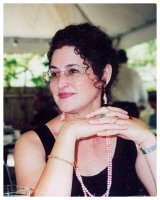Analysis of Found
It’s late October at the lake
I’m the only one here
the only one swimming
as an eagle glides in circles above
Though the view has changed
no longer softly verdant
now vibrant
spare
it’s inner core remains the same
The tiny island
just yesterday
a mound of lush green
is now bare jagged brown
with dangling scattered dashes of color
The sharply curved edge
of tangerine-rusty-gold hills
has cut a blazing line
into a background of blue
The air’s nippy
the water cold
I could feel lost and alone
but embracing solitude
with a sense of safety in the seasons
an acceptance of transition
while rhythmically pulling my strokes
| Scheme | XXXX XAAXX XXXXX XXXX XX X XXXX |
|---|---|
| Poetic Form | Tetractys (28%) |
| Metre | 11010101 101011 010110 1110101001 10111 1101010 110 1 11010101 01010 110 01111 11111 11001010110 01011 1011011 110101 010111 0110 0101 1111001 101010 1011100010 10101010 11001011 |
| Closest metre | Iambic trimeter |
| Characters | 673 |
| Words | 139 |
| Sentences | 1 |
| Stanzas | 7 |
| Stanza Lengths | 4, 5, 5, 4, 2, 1, 4 |
| Lines Amount | 25 |
| Letters per line (avg) | 20 |
| Words per line (avg) | 4 |
| Letters per stanza (avg) | 72 |
| Words per stanza (avg) | 16 |
About this poem
What is the meaning of home? It’s different for all of us. Preparing to leave CT for the warmth of a Florida winter, I had a sense of loss of family, friends and my beloved lake. In the act of truly immersing myself in that feeling I discovered what home means to me.
Font size:
Written on October 29, 2022
Submitted by joankantor on November 15, 2022
Modified on March 05, 2023
- 41 sec read
- 62 Views
Citation
Use the citation below to add this poem analysis to your bibliography:
Style:MLAChicagoAPA
"Found" Poetry.com. STANDS4 LLC, 2024. Web. 16 May 2024. <https://www.poetry.com/poem-analysis/145697/found>.


Discuss this Joan Kantor poem analysis with the community:
Report Comment
We're doing our best to make sure our content is useful, accurate and safe.
If by any chance you spot an inappropriate comment while navigating through our website please use this form to let us know, and we'll take care of it shortly.
Attachment
You need to be logged in to favorite.
Log In